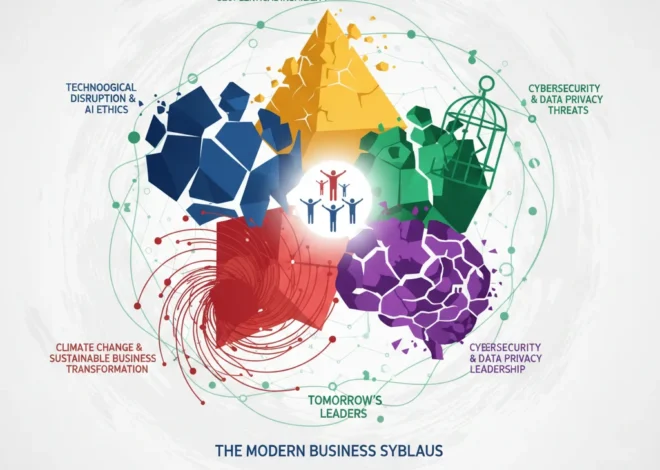
High Stakes, High Debt: Is Oracle’s AI Bet a Stroke of Genius or a House of Cards?
The world of artificial intelligence is a gold rush, and every tech giant is scrambling to sell the picks and shovels. But as the dust settles from a recent Wall Street tech sell-off, one of the industry’s most seasoned prospectors, Oracle, finds itself in a peculiar position. While the AI boom rages on, investors are punishing the software titan for its audacious, multi-billion-dollar bet on the future of AI. The stock has fallen harder than its rivals, and the reason boils down to a classic high-stakes drama of debt, dependency, and a daring challenge to the cloud computing hierarchy.
At the heart of this story is Oracle’s co-founder and chairman, Larry Ellison, a figure renowned for his bold, often contrarian, moves. His company is pouring an astronomical amount of money into building massive, specialized data centers. This isn’t your standard cloud infrastructure; this is the high-octane, super-powered hardware needed for the most demanding task in the AI universe: training large language models (LLMs). But as Oracle takes on immense debt to fund this vision, Wall Street is asking a tough question: is this a visionary leap into the future or a reckless gamble on a very narrow, and potentially fickle, market?
Let’s dive deep into Oracle’s grand strategy, dissect the fears rattling investors, and explore what this high-stakes game means for the entire tech ecosystem—from startups and developers to the cloud giants themselves.
The All-In Bet: Building the AI Superhighways
For years, Oracle has been the reliable, if not always exciting, enterprise software giant. Its databases are legendary, and its enterprise resource planning (ERP) software is deeply embedded in the world’s largest corporations. In the cloud computing wars, however, its Oracle Cloud Infrastructure (OCI) has been a distant contender, trailing far behind the “big three”: Amazon Web Services (AWS), Microsoft Azure, and Google Cloud.
Instead of trying to compete head-on across the board, Oracle has chosen a different path: specialization. Ellison’s strategy is to build the absolute best, most performant, and cost-effective infrastructure for a very specific, and very lucrative, niche: AI model training. This involves massive capital expenditures—spending on physical assets like servers and data centers—to acquire tens of thousands of high-end NVIDIA GPUs, the silicon brains that power modern AI.
The strategy appeared to be a masterstroke when they landed a marquee client: OpenAI, the creator of the revolutionary ChatGPT. By providing the raw computing power OpenAI needed, Oracle instantly gained immense credibility in the AI space. The plan is to attract other major AI players who need to train their foundational models, creating a powerful new revenue stream. The problem? This kind of construction doesn’t come cheap. Oracle’s capital spending is projected to soar, with the company taking on significant debt to finance the expansion. According to the Financial Times, this heavy borrowing in a high-interest-rate environment has made investors nervous, contributing to a stock drop that outpaced rivals like Microsoft and Alphabet (source).
Wall Street’s Jitters: Why the Market is Spooked
On the surface, investing heavily in the infrastructure powering the biggest tech revolution in a generation seems like a no-brainer. So why the long faces on Wall Street? The skepticism stems from a potent cocktail of financial risk, customer concentration, and the fundamental nature of the AI market itself.
1. The Mountain of Debt and CAPEX
Building world-class data centers is an eye-wateringly expensive endeavor. Oracle’s capital expenditure is expected to hit between $7 billion and $7.5 billion this fiscal year, a massive outlay for a company trying to prove its cloud prowess. This spending is being funded by borrowing, which looks a lot less attractive when interest rates are high. Investors worry that Oracle is leveraging its stable, profitable legacy software business to fund a speculative venture. If the demand for its specialized AI cloud doesn’t materialize as quickly or as broadly as hoped, the company could be saddled with underutilized, depreciating assets and a massive debt burden.
2. The Peril of Customer Concentration
Landing OpenAI was a coup, but it also highlights a significant risk. A huge portion of Oracle’s AI cloud revenue is tied to a very small number of very large customers. This is a precarious position. What happens if OpenAI develops a closer relationship with its primary investor, Microsoft, and moves more of its workloads to Azure? What if another AI giant decides to build its own custom hardware, as Google and Amazon have done? Relying on a handful of “whale” clients means your entire strategy can be upended by a single contract negotiation or a shift in a partner’s corporate strategy.
Beyond Grand Theft Auto: Why Rockstar's Layoffs Signal a Tectonic Shift in Tech
3. The Training vs. Inference Dilemma
The world of AI computing can be split into two main phases: training and inference.
- Training: This is the incredibly intense, time-consuming, and expensive process of teaching an AI model by feeding it vast amounts of data. It requires massive clusters of GPUs running at full tilt for weeks or months. This is the market Oracle is targeting.
- Inference: This is the process of using the trained model to make predictions or generate content (e.g., when you ask ChatGPT a question). It’s a much less intense but far more frequent task.
The concern is that the hyper-intensive training phase for foundational models may be a temporary boom. Once the major models are built, the bulk of the long-term, recurring revenue will come from inference. While Oracle is chasing the big-ticket training projects, competitors like AWS and Azure are building vast ecosystems to capture the sprawling, long-tail market of everyday AI inference, which may prove more stable and profitable over time.
To better understand the gamble Oracle is taking, let’s break down the potential outcomes of its high-risk, high-reward strategy.
| Potential Rewards (The Upside) | Inherent Risks (The Downside) |
|---|---|
| Market Leadership in a Key Niche: Oracle could become the undisputed leader for large-scale AI training, a highly profitable and prestigious market segment. | Massive Debt Burden: Heavy borrowing could strain finances if revenue growth doesn’t meet ambitious targets, impacting profitability. |
| Leapfrogging Competitors: A successful AI push could elevate OCI’s status, helping it finally break into the top tier of cloud providers. | Customer Concentration: Over-reliance on a few large clients like OpenAI creates significant vulnerability if they defect or reduce spending. |
| Attracting a New Ecosystem: Top AI companies using OCI could attract a wave of smaller AI startups and developers, building a loyal community. | A Fleeting Market: The intense “training boom” might slow down, leaving Oracle with expensive, specialized hardware as the market shifts to inference. |
| Redefining the Oracle Brand: A win in AI would transform Oracle’s image from a legacy software provider to a cutting-edge innovation leader. | Competitive Reaction: The “Big Three” cloud providers won’t stand still; they can use their vast resources to compete aggressively on price and performance. |
Implications for the Broader Tech World
Oracle’s high-wire act isn’t just an internal drama; it sends ripples across the entire tech landscape, offering crucial lessons for startups, developers, and entrepreneurs.
For Startups and Entrepreneurs
The sheer scale of Oracle’s investment is a stark reminder that building foundational AI infrastructure is a game for giants. The capital required for cutting-edge software and hardware is immense. For most startups, the message is clear: don’t compete on the infrastructure layer; build on top of it. The real opportunity lies in creating innovative applications, specialized SaaS products, and novel use cases that leverage the powerful models being trained in clouds like OCI. Oracle’s success or failure will also influence the market dynamics, potentially creating more choice and competitive pricing for the cloud resources startups depend on.
Nvidia's CEO Says China Will Win the AI Race. Is He Right?
For Developers and Tech Professionals
The demand for talent that can operate at the intersection of machine learning, cloud infrastructure, and high-performance computing is exploding. Developers with skills in programming for distributed systems, optimizing workloads for GPUs, and managing large-scale data pipelines are becoming invaluable. Furthermore, expertise in cybersecurity for these new, complex AI systems is critical. Oracle’s bet validates that the infrastructure layer of AI is becoming as important as the models themselves, creating a wealth of career opportunities for those willing to dive deep into the technical weeds.
For the Cloud Market
Oracle’s focused assault challenges the notion that the cloud wars are over. It proves that a determined competitor can still carve out a meaningful niche by targeting a specific, high-growth workload. This could inspire other players to specialize rather than generalize, leading to a more diverse and competitive cloud market. This is ultimately good for consumers, as it fosters innovation and drives down costs. The success of OCI in AI could force AWS, Azure, and Google to respond with more aggressive pricing or more specialized offerings of their own, further accelerating the pace of automation and AI development.
Beyond the Digital Firewall: How AI is Building a Fire-Proof Future
Conclusion: A Defining Moment for a Tech Titan
Oracle stands at a crossroads. Larry Ellison has placed a colossal bet that the insatiable demand for training ever-larger AI models is not a fleeting trend but the foundation of the next era of computing. He is leveraging the full financial might of his legacy empire to build a future where Oracle is not just a participant in the AI revolution, but one of its core architects.
Wall Street, with its focus on quarterly earnings and risk mitigation, sees the towering debt and the concentrated customer base and gets nervous. Both perspectives are valid. It’s a clash between a long-term technological vision and short-term financial prudence. The coming months will be critical. As Oracle reports its earnings and provides updates on its cloud capacity and customer pipeline, we will begin to see whether this enormous gamble is paying off. Whether it becomes a case study in visionary strategy or a cautionary tale of overreach, one thing is certain: the entire world of artificial intelligence is watching.


